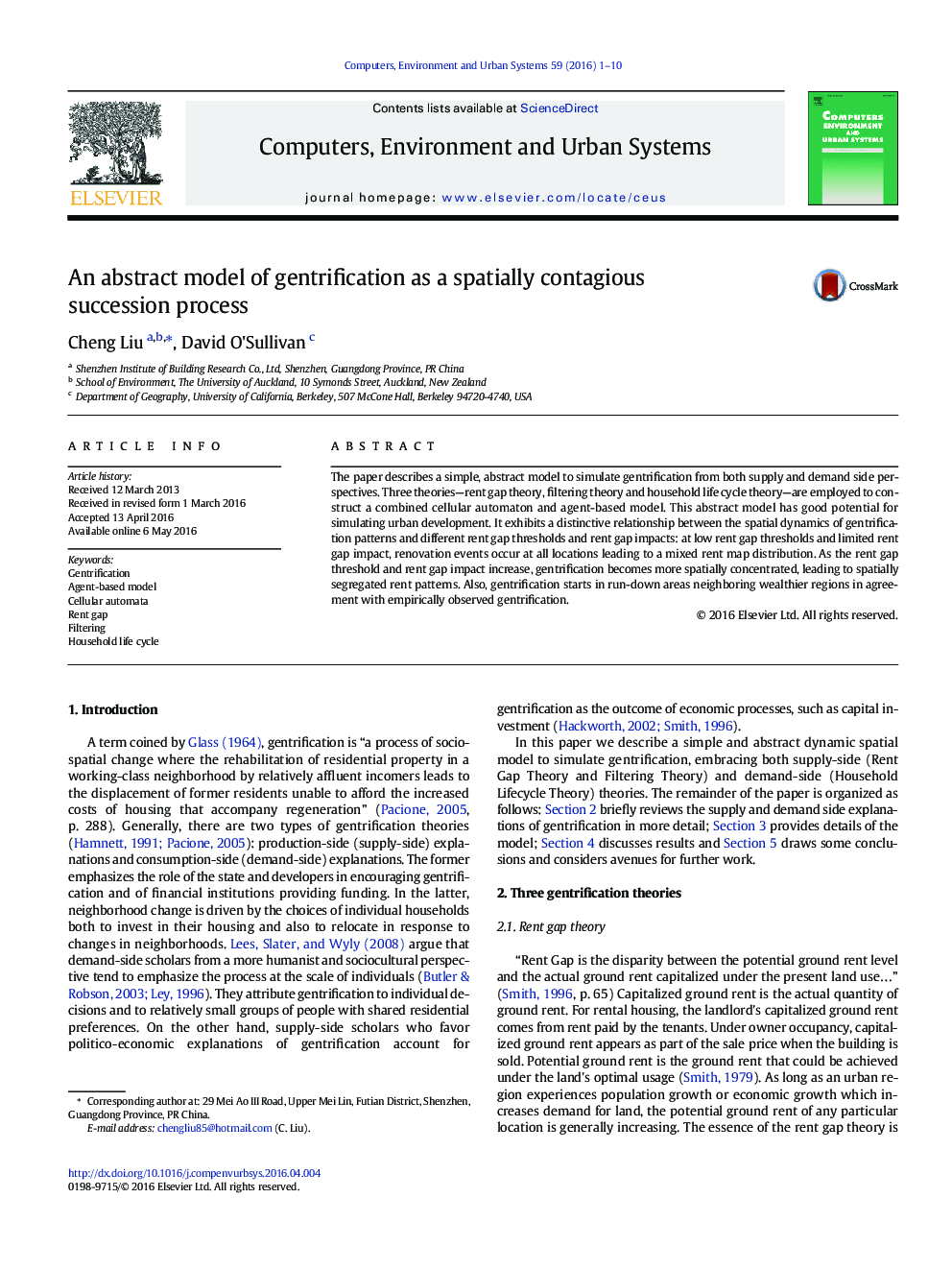| Article ID | Journal | Published Year | Pages | File Type |
|---|---|---|---|---|
| 506248 | Computers, Environment and Urban Systems | 2016 | 10 Pages |
•A simple, abstract model simulating gentrification from both supply and demand side perspectives is built.•Both integration and segregation of household are generated in the model at different rent gap thresholds and rent gap impacts, suggesting the potential of the model.•Gentrification starts in run-down areas neighboring wealthier regions in agreement with empirically observed gentrification.
The paper describes a simple, abstract model to simulate gentrification from both supply and demand side perspectives. Three theories—rent gap theory, filtering theory and household life cycle theory—are employed to construct a combined cellular automaton and agent-based model. This abstract model has good potential for simulating urban development. It exhibits a distinctive relationship between the spatial dynamics of gentrification patterns and different rent gap thresholds and rent gap impacts: at low rent gap thresholds and limited rent gap impact, renovation events occur at all locations leading to a mixed rent map distribution. As the rent gap threshold and rent gap impact increase, gentrification becomes more spatially concentrated, leading to spatially segregated rent patterns. Also, gentrification starts in run-down areas neighboring wealthier regions in agreement with empirically observed gentrification.
